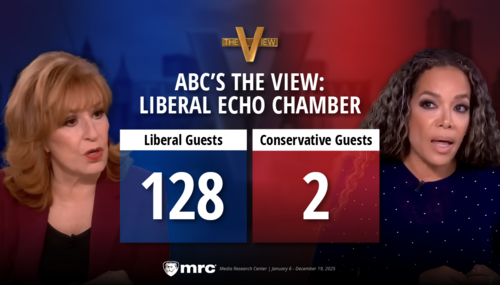
In a July 7 New York Times Magazine article ("The Place of Women on the Court"; HT to an e-mailer) apparently scheduled to appear in its July 12 print edition (based on its URL), Supreme Court Justice Ruth Bader Ginsburg told the Times's Emily Bazelon that "at the time Roe was decided, there was concern about population growth and particularly growth in populations that we don't want to have too many of."
Who is this "we" Ginsburg refers to?
Alleged reporter Bazelon did not follow up on this astounding admission.
Here, in full context of the Q&A discussion about women's reproductive rights, is Justice Ginsburg's statement:
Q: If you were a lawyer again, what would you want to accomplish as a future feminist legal agenda?
JUSTICE GINSBURG: Reproductive choice has to be straightened out. There will never be a woman of means without choice anymore. That just seems to me so obvious. The states that had changed their abortion laws before Roe [to make abortion legal] are not going to change back. So we have a policy that affects only poor women, and it can never be otherwise, and I don’t know why this hasn’t been said more often.
Q: Are you talking about the distances women have to travel because in parts of the country, abortion is essentially unavailable, because there are so few doctors and clinics that do the procedure? And also, the lack of Medicaid for abortions for poor women?
JUSTICE GINSBURG: Yes, the ruling about that surprised me. [Harris v. McRae — in 1980 the court upheld the Hyde Amendment, which forbids the use of Medicaid for abortions.] Frankly I had thought that at the time Roe was decided, there was concern about population growth and particularly growth in populations that we don’t want to have too many of. So that Roe was going to be then set up for Medicaid funding for abortion. Which some people felt would risk coercing women into having abortions when they didn’t really want them. But when the court decided McRae, the case came out the other way. And then I realized that my perception of it had been altogether wrong.
Q: When you say that reproductive rights need to be straightened out, what do you mean?
JUSTICE GINSBURG: The basic thing is that the government has no business making that choice for a woman.
Q: Does that mean getting rid of the test the court imposed, in which it allows states to impose restrictions on abortion — like a waiting period — that are not deemed an “undue burden” to a woman’s reproductive freedom?
JUSTICE GINSBURG: I’m not a big fan of these tests. I think the court uses them as a label that accommodates the result it wants to reach. It will be, it should be, that this is a woman’s decision. It’s entirely appropriate to say it has to be an informed decision, but that doesn’t mean you can keep a woman overnight who has traveled a great distance to get to the clinic, so that she has to go to some motel and think it over for 24 hours or 48 hours.
I still think, although I was much too optimistic in the early days, that the possibility of stopping a pregnancy very early is significant. The morning-after pill will become more accessible and easier to take. So I think the side that wants to take the choice away from women and give it to the state, they’re fighting a losing battle. Time is on the side of change.
It's pretty hard not to see Ginsburg's early perception of Roe as legalizing a convenient means for minimizing the number of poor, who "just happen" to be disproportionately non-white. Also recall that at the time, Medicaid was a program predominantly benefitting only the poor, and not the near middle-class entitlement into which more recent Congresses have morphed it.
Given Ginsburg's stated "at the time" position, there's little doubt that she would have declared the Hyde Amendment, which "barred the use of federal Medicaid funds for abortions except where the life of the mother would be endangered or in cases of rape or incest," unconstitutional. In the related case, Harris v. McRae, the Court upheld the Hyde Amendment by a 5-4 vote.
In its November 30, 2007 Henry Hyde obituary, the Washington Post quoted Dr. Wanda Franz, president of the National Right to Life Committee, who asserted that, "By conservative estimate, well over one million Americans are alive today because of the Hyde Amendment -- more likely two million."
So 1-2 million babies have been born into financially poor circumstances in the three-plus decades years since the Hyde Amendment became law. This apparently doesn't please Justice Ginsburg, or perhaps didn't please her at the time.
Ginsburg gets the wiggle room, in my opinion, because she told Bazelon that she "realized that my perception of it had been altogether wrong." The problem is that we can't tell what "it" is. Is it Roe v. Wade, the Hyde Amendment, or the facts and circumstances of the specific case?
Thanks to the remarkably incurious Bazelon, we don't know. What we do know is that at least for some time during her legal career, in her early 40s, Ginsburg, as a member of the unidentified "we" referred to earlier, thought that abortion as a means of controlling the population of relative undesirables was okey-dokey.
Cross-posted at BizzyBlog.com.




